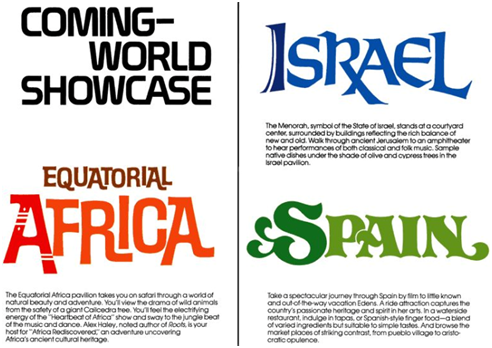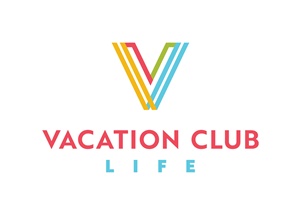October 1st 1982 marked, as Disney branded it, the beginning of the 21st century. With the opening of EPCOT Center the world was introduced to the views of tomorrow in the eyes of several industries. But the world was given something else as well. Spanning an impressive 1.2 miles around the 40 Acre World Showcase Lagoon, World Showcase brought together 9 different countries, giving them the opportunity to display their culture, cuisine, and favorite sights to the thousands of guests which would visit this park during its first year. In that first year, plans to expand the park were announced, and some other discussed attractions and pavilions were mentioned, but most of these never left the drawing board. And those that did only made it to the modal stage. 32 years later, only 2 pavilions have been added to World Showcase, neither of which were planned before opening day. Although Norway and Morocco have delighted guests since the early 90’s adding to the wealth of International flavor brought by original 9 pavilions, space remains for an additional 6 pavilions around the lagoon. So what happened to these forgotten attractions? And what were some of the imagineers original ideas for the parks? Come along with us now as we journey to discover these, the “Lost Worlds” of Epcot.
Visitors walking the Showcase opening day were promised 3 new pavilions and one of those was Israel, “The Land of the Bible”. Guests viewing the sign or guide maps would be greeted by this description of the Israel pavilion to come. “The Menorah, symbol of the state of Israel, stands at a courtyard center, surrounded by the buildings reflecting the rich balance of new and old.” From this we can assume the pavilion would reflect the view of then current day Israel and then the description goes on to discuss proposed dining and attractions . “Walk through ancient Jerusalem to an amphitheater to hear performances of both classical and fork music. Sample native dishes under the shade of olive and cypress trees in the Israel pavilion.” Many guest were excited to see this pavilion come to the Showcase but as with most others, its downfall came in the form of no major sponsor.
The Walt Disney Company hoped the governments of these countries would sponsor these pavilions however that never happened. There has only been one county that has sponsored its pavilion. Morocco’s ruler sent artisans, architects, and other craftsmen’s to create a Morocco in Florida that is close to the real thing as possible.
The proposed Spain pavilion one of the more anticipated locations for the Showcase. With the already Euro-centric Showcase displaying most of Europe’s major powers, Spain seemed like an obvious addition. The guide map started by describing Spain’s attractions. “Take a spectacular journey through Spain by dil to little known and out-of-the-way vacation Eden’s. A ride attraction captures the county’s passionate heritage and spirit in her arts.” With 2 attractions the Spain pavilion would have been unique in Showcase. And like all other Showcase pavilions, it wouldn’t be complete without shopping and dinning experiences. “In a waterside, restaurant, indulge in taps, or Spanish-style finger food—a blend of varied ingredients but suitable to simple tastes. And browse the market places of striking contrast, from pueblo village to aristocratic opulence.” As wonderful as this pavilion would have been, again it was the victim of no sponsor. Although we have recently gained a glimpse of this promos with the addition of “Spice Road Table”, the tapas resultant on the waterside in Morocco.
During the TV special “EPCOT Center: The Opening Celebration” there is a segment with Host Danny Kaye meets “Roots” author Alex Haley in a spot of land in the World Showcase. From what we can tell this is spot of land between China and Germany. During their discussion Mr. Haley brings up one of the most well know “Lost Worlds” of Epcot, the Equatorial Africa pavilion. This pavilion was going to be the first to represent, more than one county. Again guests were greeted by a sign and guide map description of this pavilion. “The Equatorial Africa pavilion takes you on a safari through a world of natural beauty and adventure. You’ll view the drama of wild animals from the safety of a giant Cailcedra tree.” Sounds like EPCOT was going to have live animals, yes years before Animal Kingdom was ever thought of, Disney was exploring the idea of a venture into the animal kingdom. The description goes on to depict the pavilion as, “You’ll feel the electrifying energy of the “Heartbeat of Africa” show and sway to the jungle beat of the music and dance. Alex Haley, noted author of Roots, is your host for “Africa Rediscovered”, an adventure uncovering Africa’s ancient cultural heritage.” The pavilion was planned to be opened 1 year after the opening of EPCOT Center in 1983 however, again with limited funding, and no major sponsor the planned pavilion never left the model stage.
There have been a few other announcements and concepts over the years that those who saw them wondered where they went. Prior to the opening of the Norway pavilion in 1988 it was discussed for all the countries of the North Sea including Denmark, Norway, and Sweden, would join together in what would be know as the Scandinavia pavilion. In the end Norway investors came up with the needed money to create the pavilion on their own and this Norway at Epcot was born. In the 1972 Annual Investor Report, concept art for a Venezuela pavilion featuring a sky ride past historic Angle Falls impressed those who saw it. In the 1990’s concept art for a Russia pavilion surfaced. The plans for this recreation of the largest eastern European county included replicas of Saint Basil’s Cathedral and Red Square in Moscow. Attractions included a sled ride through the Russian scenery, and a ride through retelling of the Russian folk story “The Fish and the Fool”. There were also some proposed attractions for pavilions that did come into existence. For instance, in Germany and Japan there are show buildings meant to house 2 unique experiences. In Germany, a plan for a Rhine River Cruise featuring scenes of the sweeping vistas one may see on an actually river cruise there. Again no major sponsor was found for the Germany pavilion and thus no river cruise ever made it. As for Japan, the show build was constructed for a ride similar to the Matterhorn in Disneyland. The Mount Fuji roller coaster would have brought thrill attractions to World Showcase and Epcot. After protest from the Eastman Kodak company, the official photography sponsor at the time, that Fuji would make people think of their largest competitor as well as limited resources, the idea was cut, even though from aerial shots the building can still be seen where the ride would have existed.
Walt said, “I would rather entertain people and hope they learn something from it.” His focus with Epcot, and the focus of those imaginers who took his vision and brought us what we know and love today was all centered around this thought. Even though we may not have the chance to explore these “Lost Worlds”, Epcot continues to wow guests with its unique blend of cultures and cuisines 32 years later. And as we continue through the 21st century, we can only wait and see how the creative minds at Disney will surprise us next.







